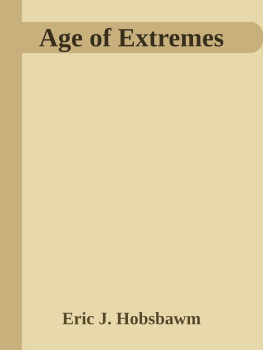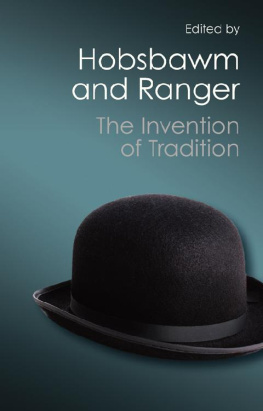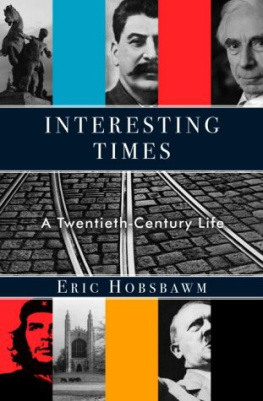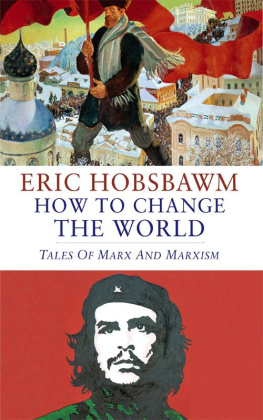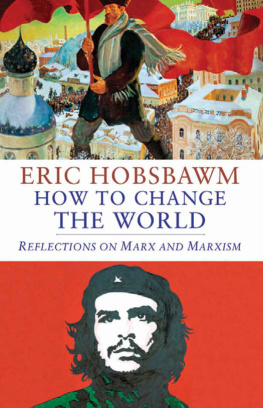Eric J. Hobsbawm - Age of Extremes
Here you can read online Eric J. Hobsbawm - Age of Extremes full text of the book (entire story) in english for free. Download pdf and epub, get meaning, cover and reviews about this ebook. year: 1995, publisher: Abacus, genre: History. Description of the work, (preface) as well as reviews are available. Best literature library LitArk.com created for fans of good reading and offers a wide selection of genres:
Romance novel
Science fiction
Adventure
Detective
Science
History
Home and family
Prose
Art
Politics
Computer
Non-fiction
Religion
Business
Children
Humor
Choose a favorite category and find really read worthwhile books. Enjoy immersion in the world of imagination, feel the emotions of the characters or learn something new for yourself, make an fascinating discovery.
- Book:Age of Extremes
- Author:
- Publisher:Abacus
- Genre:
- Year:1995
- Rating:4 / 5
- Favourites:Add to favourites
- Your mark:
- 80
- 1
- 2
- 3
- 4
- 5
Age of Extremes: summary, description and annotation
We offer to read an annotation, description, summary or preface (depends on what the author of the book "Age of Extremes" wrote himself). If you haven't found the necessary information about the book — write in the comments, we will try to find it.
Age of Extremes — read online for free the complete book (whole text) full work
Below is the text of the book, divided by pages. System saving the place of the last page read, allows you to conveniently read the book "Age of Extremes" online for free, without having to search again every time where you left off. Put a bookmark, and you can go to the page where you finished reading at any time.
Font size:
Interval:
Bookmark:
| Age of Extremes |
| Eric J. Hobsbawm |
An Abacus Book
First published in Great Britain by Michael Joseph 1994
This edition published by Abacus 1995
Copyright Eric Hobsbawm 1994
The moral right of the author has been asserted.
A CIP catalogue record for this book is available from the British Library.
ISBN 0349106711
Printed and bound in Great Britain by Clays Ltd, St Ives pic Abacus
A Division of
Little, Brown and Company (UK)
Brettenham House
Lancaster Place
London WC2E 7EN
Illustrations vii
Preface and Acknowledgements ix
The Century: A Birds Eye View 1
PART ONE: THE AGE OF CATASTROPHE
1. The Age of Total War 21
2. The World Revolution 54
3. Into the Economic Abyss 85
4. The Fall of Liberalis 109
5. Against the Common Enemy 142
6. The Arts 191445 178
7. End of Empires 199
PART TWO: THE GOLDEN AGE
8. Cold War 225
9. The Golden Years 257
10. The Social Revolution 19451990 287
11. Cultural Revolution 320
12. The Third World 344
13. Real Socialism 372
PART THREE: THE LANDSLIDE
14. The Crisis Decades 403
15. Third World and Revolution 433
16. End of Socialism 461
17. The Avantgarde Dies-The Arts After 1950 500
18. Sorcerers and Apprentices-The Natural Sciences 522
19. Towards the Millennium 558
Further Reading 610
1. The Archduke Franz Ferdinand and his wife (Roger Viollet)
2. Canadian soldiers among shell craters, 1918 (Popperfoto)
3. War cemetery, Chalons-sur-Marne (Roger Viollet)
4. Russian soldiers, 1917 (Hulton Deutsch)
5. The October revolution: Lenin (Hulton Deutsch)
6. May Day poster, c. 1920 (David King Collection)
7. A German banknote for twenty million marks (Hulton Deutsch)
8. The Wall Street crash of 1929 (Icon Communications)
9. British unemployed in the 1930s (Hulton Deutsch)
10. Adolf Hider and Benito Mussolini (Hulton Deutsch)
11. Italian Fascists marching past Mussolini (Hulton Deutsch)
12. Nazi rally at Nuremberg (Robert Harding Picture Library)
13. Anarchist militia in Barcelona, 1936 (Hulton Deutsch)
14. Adolf Hitler in occupied Paris (Hulton Deutsch)
15. US Flying Fortresses raid Berlin (Popperfoto)
16. The battle of Kursk, 1943 (Robert Harding)
17. London burning, 1940 (Hulton Deutsch)
18. Dresden burned, 1945 (Hulton Deutsch)
19. Hiroshima after the atom bomb, 1945 (Rex Features)
20. Josip Broz, Marshal Tito (Rex Features)
21. A British wartime poster (Imperial War Museum)
22. Algiers, 1961 (Robert Harding Picture Library)
23. Premier Indira Gandhi (Rex Features)
24. A US cruise missile (Rex Features)
25. A silo for Soviet SS missiles (Popperfoto)
26. The Berlin Wall (Popperfoto)
27. Fidel Castros rebel army in Santa Clara (Magnum)
28. Insurrectionaries in El Salvador (Hulton Deutsch)
29. Anti-Vietnam War demonstration, London (Hulton Deutsch)
30. Iran, 1979 (Hulton Deutsch)
31. Michael Sergeyevich Gorbachev (Rex Features)
32. The Berlin Wall falls, 1989 (Hulton Deutsch)
33. Stalin removed in Prague (BBC Photographic Library)
34. Agricultural terracing in the Liping valley, China (Comstock)
35. Electron micrograph of a bacterium (Science Photo Library)
36. Chinese peasant ploughing (Robert Harding)
37. Turkish immigrant couple in West Berlin (Magnum)
38. West Indians arriving in London in the 1950s (Hulton Deutsch)
39. Africa at the end of the century (Gideon Mendel/Network)
40. Ahmedabad, India (Robert Harding)
41. Chicago, USA (Robert Harding)
42. Rush hour in Shinjuku, Tokyo (Rex Features)
43. Railyard, Augsburg, Germany (Comstock)
44. Motorways, cars and pollution in Houston, Texas (Magnum)
45. The first moon landing, 1969 (Hulton Deutsch)
46. A 1930s cannery, Amarillo, Texas (FPC/Robert Harding)
47. Dungeness nuclear power station (Rex Features)
48. Deindustrialisation in North England, Middlesbrough (Magnum)
49. The refrigerator (Robert Harding)
50. The television set (Robert Harding)
51. The supermarket (Rex Features)
52. The portable tape-cassette player (Robert Harding)
53. Neville Chamberlain fishing (Popperfoto)
54. Earl Mountbatten of Burma (Hulton Deutsch)
55. Lenin, 1917 (Hulton Deutsch)
56. Gandhi on the way to negotiate with the British government (Rex Features)
57. Stalin (FPC International/Robert Harding)
58. Hitlers birthday parade, 1939 (Hulton Deutsch)
59. Chairman Mao by Andy Warhol ( 1994 The Andy Warhol Foundation for the Visual Arts, Inc. Photo: Bridgeman Art Library)
60. The corpse of Ayatollah Khomeini lying in state (Magnum)
61. George Grosz savages the German ruling class
62. British workers march on London (Hulton Deutsch)
63. Anti-Vietnam War demonstration, Berkeley, California (Magnum)
64. Claims to world conquest
65. After the Gulf War, 1991 (Magnum)
66. Homeless (Rex Features)
67. Waiting to vote in South Africa (Rex Features) 68. Sarajevo eighty years after 1914 (Popperfoto) (Copyright holders are indicated in italics)
Nobody can write the history of the twentieth century like that of any other era, if only because nobody can write about his or her lifetime as one can (and must) write about a period known only from outside, at second or third-hand, from sources of the period or the works of later historians. My own lifetime coincides with most of the period with which this book deals, and for most of it, from early teenage to the present, I have been conscious of public affairs, that is to say I have accumulated views and prejudices about it as a contemporary rather than as a scholar.
This is one reason why under my professional hat as a historian I avoided working on the era since 1914 for most of my career, though not refraining from writing about it in other capacities. My period, as they say in the trade, is the nineteenth century. I think it is now possible to see the Short Twentieth Century from 1914 to the end of the Soviet era in some historical perspective, but I come to it without the knowledge of the scholarly literature, let alone of all but a tiny sprinkle of archive sources, which historians of the twentieth century, of whom there is an enormous number, have accumulated.
It is, of course, utterly impossible for any single person to know the historiography of the present century, even that in any single major language, as, let us say, the historian of classical antiquity or of the Byzantine Empire knows what has been written in and about those long periods. Nevertheless, my own knowledge is casual and patchy even by the standards of historical erudition in the field of contemporary history.
The most I have been able to do is to dip into the literature of particularly thorny and controverted questionssay, the history of the Cold War or that of the 1930sfar enough to satisfy myself that the views expressed in this book are tenable in the light of specialist research. Of course, I cannot have succeeded. There must be any number of questions on which I display ignorance as well as controversial views.
This book, therefore, rests on curiously uneven foundations. In addition to the wide and miscellaneous reading of a good many years, supplemented by what reading was necessary to give lecture courses on twentiethcentury history to the graduate students of the New School for Social Research, I have drawn on the accumulated knowledge, memories and opinions of someone who has lived through the Short Twentieth Century, as what the social anthropologists call a participant observer, or simply as an open-eyed traveller, or what my ancestors would have called a kibbitzer, in quite a lot of countries. The historical value of such experiences does not depend on being present on great historic occasions, or having known or even met prominent history-makers or statesmen. As a matter of fact, my experience as an occasional journalist enquiring into this or that country, chiefly in Latin America, has been that interviews with presidents or other decision-makers are usually unrewarding, for the obvious reason that most of what such people say is for the public record.
Font size:
Interval:
Bookmark:
Similar books «Age of Extremes»
Look at similar books to Age of Extremes. We have selected literature similar in name and meaning in the hope of providing readers with more options to find new, interesting, not yet read works.
Discussion, reviews of the book Age of Extremes and just readers' own opinions. Leave your comments, write what you think about the work, its meaning or the main characters. Specify what exactly you liked and what you didn't like, and why you think so.

